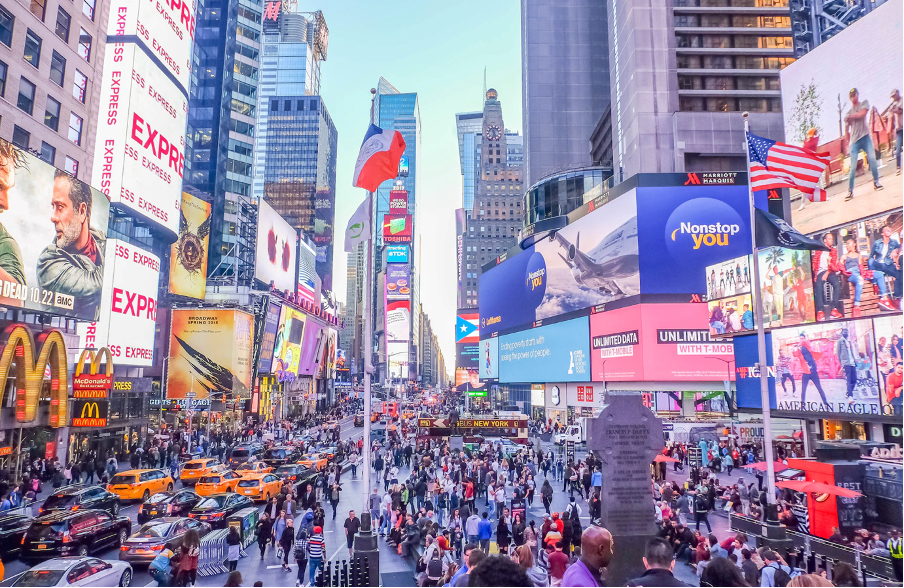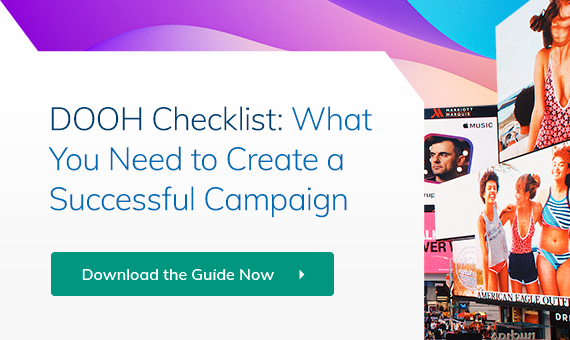Out of home (OOH) advertising has existed for thousands of years. Ever since the Ancient Egyptians erected tall stone obelisks to publicize laws and treaties, outdoor advertising has been used by rulers, governments and businesses to communicate key messages to the general public.
Today, Out of Home advertising is more relevant than ever – not least because big, bright, colorful, and unmissable outdoor ads are one of the most efficient methods of reaching large numbers of consumers in public places.
However, whereas in the past the most common forms of out of home advertising were print-based billboards and posters, this is changing fast thanks to entrance of digital OOH.
Digital out of home advertising, or simply DOOH advertising for short, first emerged in the early noughties, and has since enjoyed tremendous growth – representing just 17% of the total OOH ad spending in 2015, yet on course to reach 42% by 2023.
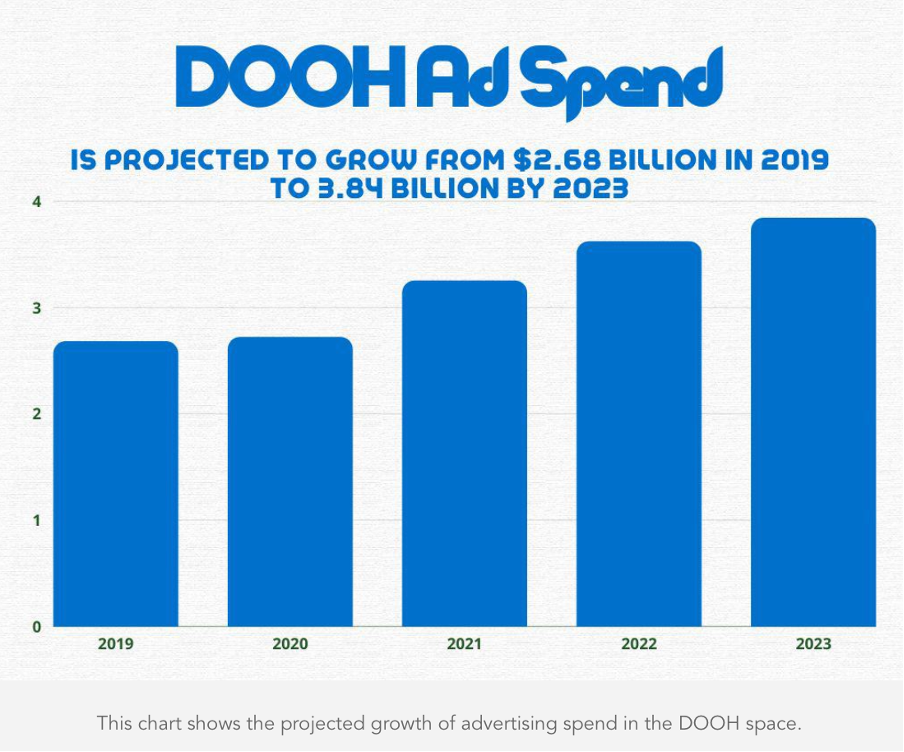
(Image source: seobysociallyin.com)
As such, the global digital out of home advertising market will almost triple in size from a little over $5 billion in 2017 to more than $15 billion by 2027.
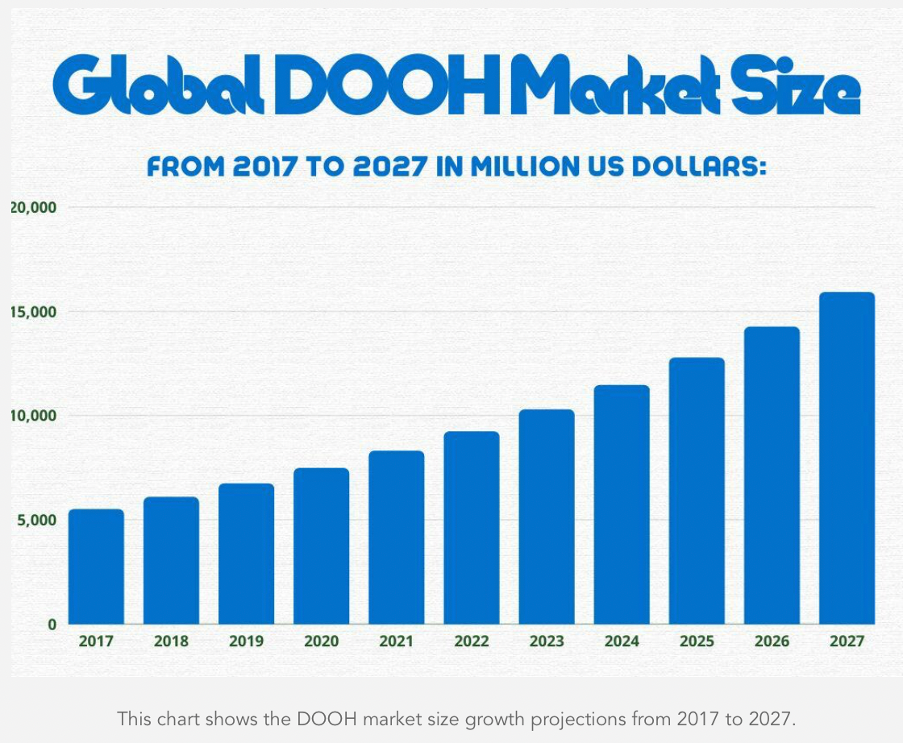
(Image source: seobysociallyin.com)
The figures are clear – digital Out of Home advertising is in the ascendency, and there are many reasons why this should be.
In this post, we explore the main advantages DOOH advertising holds over static billboards and other print-based out of home traditional advertising.
It’s Easy to Get Started with DOOH Advertising – and Update Your Ads in Real-Time
Any business that has experience with traditional print-based out of home advertising on billboards or other outdoor media knows that the whole process is slow, frustrating, often expensive, and most results are immeasurable.
Read more: How to Measure OOH Advertising
Buying ad space on traditional media involves a long, tedious process, with lots of middlemen negotiating prices with ad space owners – a process which increases the advertiser’s costs. Wait times and production fees stack up once again when the time comes to update or change the ad – increasing costs once more.
By contrast, getting started with digital out of home advertising is simple. Really simple, in fact, thanks to the power, convenience, and affordability of programmatic DOOH (pDOOH) platforms like The Neuron.
Because DOOH advertising takes place on a network of digital screens, ads can be created digitally and uploaded to a pDOOH platform in minutes. Advertisers simply select the screens on which they want their ad displayed, select their criteria (such as time of day, day of week, weather conditions, target audience, etc.), and in a couple of clicks their ad is live – no waiting around, no middlemen, no hidden fees.
Read more: The Beginner’s Guide to pDOOH: Programmatic DOOH and Why It’s a Game-Changer
What’s more, if you want to change or your ad to in response to changing conditions – perhaps a news event, sports result, a change in weather or temperature – you can do so in real-time. This ability to change creative messages in real time was cited as a top benefit of pDOOH by the vast majority of both media agencies and advertisers in the recent State of the Nation: Programmatic OOH report – along with the ability to increase, decrease, or reallocate/optimize media spend at short notice, and the flexibility of pDOOH.
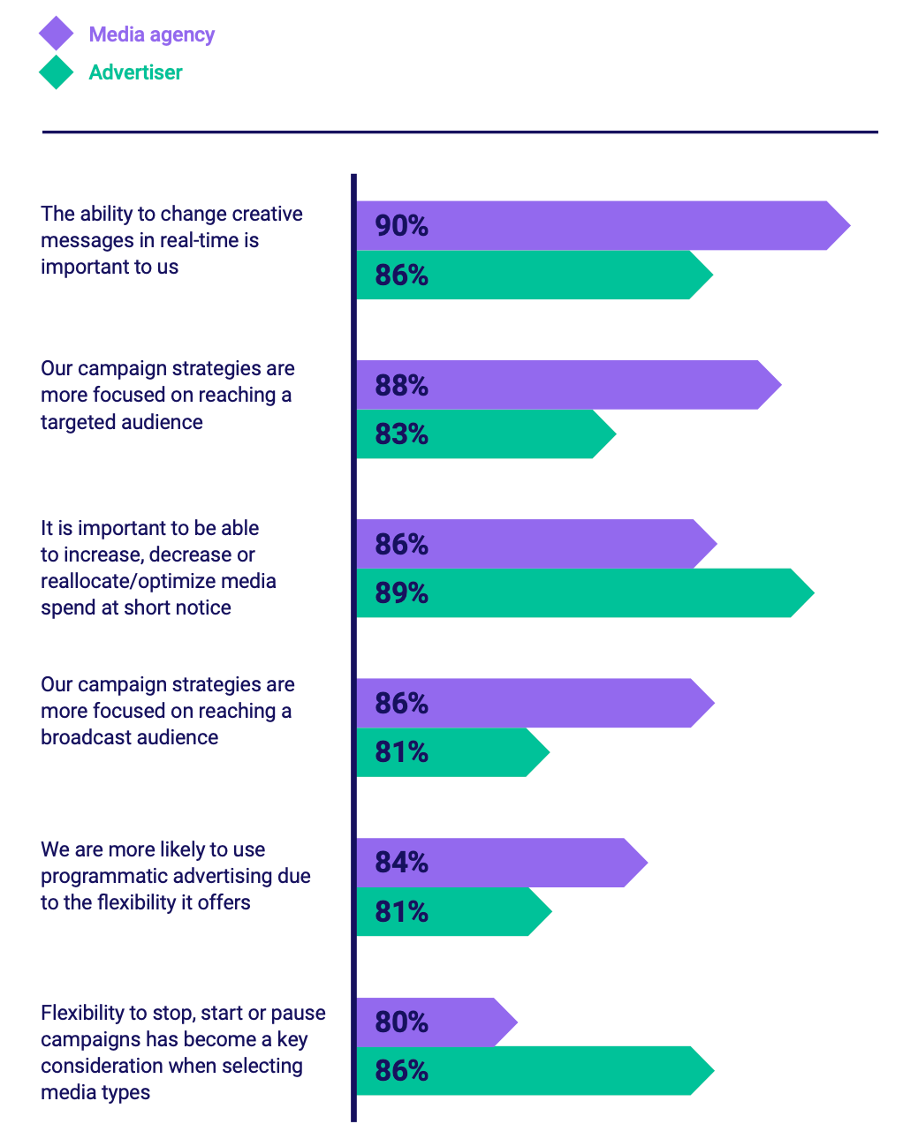
(Image source: State of the Nation: Programmatic OOH)
You Can Target Key Audiences with Programmatic DOOH Advertising
Flexible and real-time ad targeting is pretty much impossible with traditional print-based billboards and other types of out of home advertising. Once you’ve chosen where to display your adverts, that’s where they will stay for the duration of the agreement with the ad space owner.
In reality, when it comes to traditional OOH advertising, a lot of the decision-making relies on gut feelings and guesswork – whereas with programmatic DOOH, advertisers have hard data and facts to work with.
Utilizing anonymized mobile location data (plus data from other sources), pDOOH platforms build up a detailed picture of where key demographics spend their time, along with their daily routines near digital screens. Over time, a detailed picture of target audience movement emerges – and advertisers have access to this data right at their fingertips. This means they can display ads strategically in specific locations at specific times when they know their ideal customers will be most likely to see it.
This is because programmatic DOOH platforms allow for trigger-based buying of ad space. This is a fantastic benefit because not only does it mean advertisers can buy impressions based on the movements of audiences, but also in response to live events, news, locations, weather and environmental conditions – ensuring ad targeting is timely and relevant to consumers.
This, combined with the ability to measure DOOH campaign performance across digital screens, is why 91% of media agencies and 84% advertisers recognize pDOOH as offering excellent value and effective returns on investment.
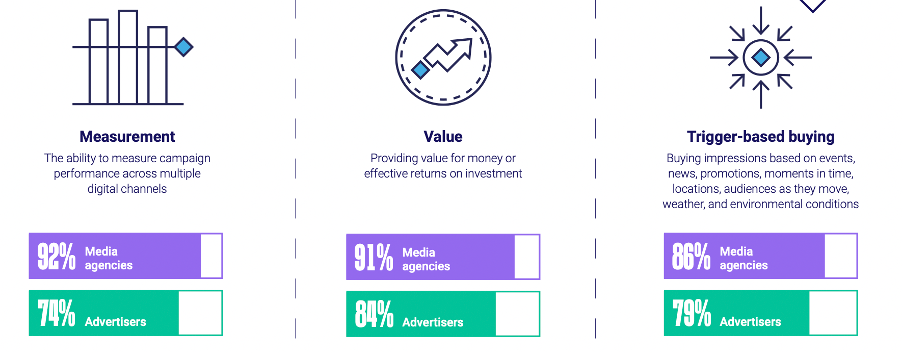
(Image source: State of the Nation: Programmatic OOH)
DOOH Advertising Is Dynamic
Static billboards and other print-based out of home ads are just that – static.
Advertisers put up their ads and there they stay for weeks or even months on end. As such, it doesn’t take long for these ads to, quite literally, fade into the background and for people to stop noticing them. Indeed, being exposed to the elements all the time, printed outdoor ads quickly dim and discolor, start to peel, and obtain weather damage – tarnishing the advertiser’s brand image in the process.
This simply does not happen with digital Out of Home advertising. Indeed, digital displays are by nature bright, colorful and impervious to the elements.
What’s more, they are by no means static. Digital signage displays change ads every few seconds as ads play on a loop. This in itself keeps the content fresh and engaging for viewers – but DOOH ads can also incorporate moving or flashing images, animations and video, which are much more effective than static ads for holding people’s attention.
While roadside billboards can’t utilize video content (due to the fact that moving images are considered to be too distracting for drivers), the great thing about DOOH advertising is that it’s not limited to billboards. Place-based media – including digital signage in shopping malls, gyms, stores, entertainment venues, bars, restaurants and sports venues – are all fantastic venues for displaying video advertisements, as are transit screens, gas stations, elevators and urban panels. In all these places, dwell times are high – providing the perfect opportunity for advertisers to display eye-catching, TikTok-style video messages to captive audiences.
Get Started with DOOH Advertising Today with The Neuron
With all these outstanding benefits, it’s no wonder digital out of home advertising was the number one advertising medium respondents to The State of Nation report planned to invest in over the following twelve months – surpassing even social media advertising.
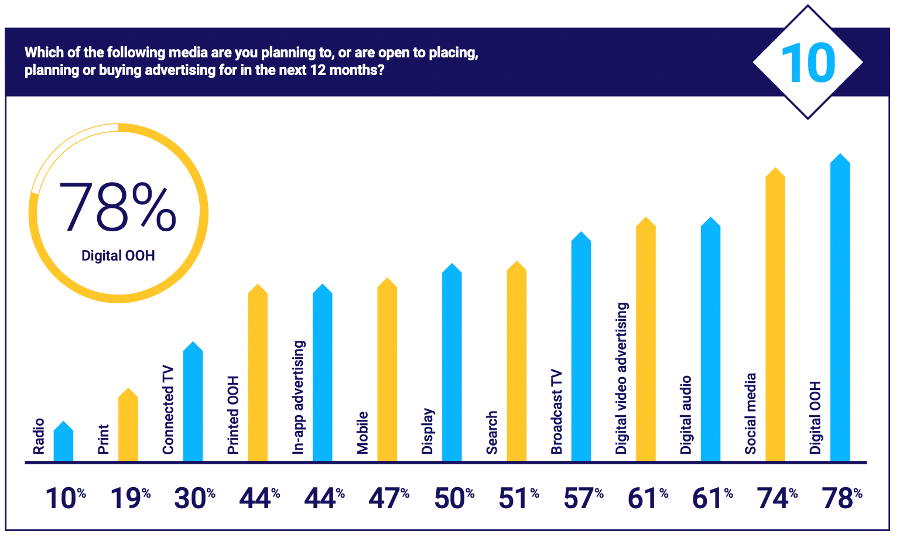
(Image source: State of the Nation: Programmatic OOH)
To get started with DOOH advertising today, you need a programmatic digital out of home platform that connects you seamlessly to premium billboard space.
You need The Neuron.
At The Neuron, we provide advertisers with a platform that completely eliminates middlemen from the ad buying process, delivers instant access to thousands of digital screens, provides up-to-the-minute analytics at your fingertips, and even comes with our 100% free-to-use DOOH Design Studio to help you get your digital ad ready in minutes.
